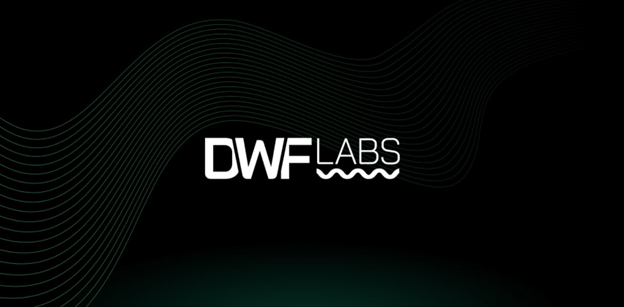
The past few weeks have been quite a rollercoaster for the crypto market as we witnessed the collapse of FTX and its sister trading firm Alameda Research. However, this has not deterred long-term crypto investors from allocating funds towards potential projects.
Just recently, DWF Labs, a leading multi-stage Web3 firm and market maker, invested $15 million towards the Binance Industry Recovery Initiative (IRI). Prior to that, the company had also committed $10 million to support the growth of decentralized projects building on The Open Network (TON).
We spoke with Andrei Grachev, Managing Partner at DWF Labs, to get some more insight on what has been motivating the firm to invest in crypto innovations despite the tough market conditions. Here is what he had to share about their latest investments and the possible effects of FTX’s demise.

- I understand DWF Labs is committed to the growth of Web3 and currently supporting several startups. Could you briefly explain to our readers what drives your interest in crypto innovations at this time?
I think the key to innovation in web3 is decentralization. Many projects that we are seeing and decided to invest into, are bringing to the table real decentralization value. We have experienced massive tech acceleration especially during crypto winter or previous bear cycles. That is why we are so bullish about funding the next wave of crypto innovation. This year alone, we funded more than 50 projects.
- In most cases, VCs in the crypto industry are only focused on providing capital while the growth process often involves more than just funding. What extra value would you say DWF Labs offer to early stage crypto ventures? Does that value derive from the market making aspect of DWF Labs?
You are right. Providing capital alone is not sufficient in this industry. There are so many moving parts in every project and we are committed to our long term vision by supporting as much as we can. Our team is relatively small but incredibly experienced in every aspect of launching and running a project. So when DWF Labs invests, it is never only capital. For example, because we are one of the world’s top crypto traders, we can help our portfolio projects to list on reputable exchanges and provide their token with the liquidity they need from day one.
- In light of the recent FTX debacle, DWF Labs recently announced a $15 million allocation towards the Binance Industry Recovery Initiative (IRI). Is this the right step for the industry and what motivated DWF Labs to join the initiative?
The rise and fall of FTX exposed malpractices that nobody could imagine. That reflected very badly on the whole industry, and it will take some time before we go back to the level of trust and excitement that we have seen in 2021. However, these are the moments when the community comes together and stands strong against bad actors. We decided to support the IRI because we believe that founders need to stay positive and focus on building the future of web3.
- So far, the FTX contagion has affected multiple players in the crypto industry, both big and upcoming projects. What criteria would you suggest to best identify the crypto companies that are worth saving?
We certainly look at a project as a company, but frankly what makes a certain project stand out compared to others is the team. We support bold founders: driven individuals who strongly believe that what they are building is changing the world. We invest a lot of time talking to these builders. We want to know what motivates them and how big their ambitions are. You can recognize these founders when you look at their commitment regardless of the market conditions. To them, bull or bear does not matter.
- Overall, the unexpected collapse of FTX has caused a lot of disarray in the industry. How long do you think this impact will last and what major effects will it have on the broader crypto and blockchain ecosystem?
What you see in the immediate aftermath of these situations is a withdrawal of funds. The general audience and the retail investors get scared and step back. That perpetuates FUD and honestly makes it harder for some projects to stay afloat without liquidity. However, let us not lose track of what is being built. Crypto is not just about putting money in and waiting for the price to go up. There is massive innovation on the way. It is already being built and as soon as the general public understands that, funds will come back to fuel further growth.
- Moving on to another recent development, DWF Labs has partnered with The Open Network (TON) and committed $10 million to support the growth of TON’s ecosystem. Could you briefly shed some more light on this partnership.
Sure! TON is one of the most exciting things happening in crypto at the moment. There has been a massive amount of foundation development for the past few years, and now it is time to deploy. We have seen amazing ideas turned into reality within a few weeks. The TON community has grown exponentially. There are not many projects yet, but developers are finding the resources they need to build innovation on top of TON’s infrastructure.
- What are your thoughts on TON’s transition to a community-driven blockchain, was it a blessing in disguise for Telegram and the Web3 community building on TON?
TON is promoting a pure approach to web3, with decentralization at its core. The ease of access to the token through the Telegram wallet and the multitude of other ecosystem tools already available shows that this could be the blueprint for other decentralized projects in the future. It seems like TON managed to finally crack the nut of a seamless entry point to web3 for anyone, anywhere.
- Despite the noise in Web3, there are many projects that have a solid value proposition but never scale to their potential. What future plans does DWF Labs have to increase the support towards underexposed crypto innovations?
In the early stage of crypto adoption we have seen a community driven slow growth. Then the ICO craze started and marketing took over. There were a lot of promises and many failed to deliver. I think that the industry has learnt from the past and it is moving towards the next level of maturity. We always hear about the need for token utility to foster mass adoption. Utility spreads fast. Look at web2 as an example: Google never advertised their service. They just focused on building the best and fastest user experience. We are at a stage now where web3 projects are doing the same. Look at TON as an example. User experience and token utility are the best marketing strategy.
Andrei Grachev is the co-founder of Digital Wave Finance (DWF), the parent company to DWF Labs. He also doubles down as the Managing Partner at DWF Labs. Unlike the typical crypto investment firms, DWF Labs provides capital and supports the growth of Web3 projects through other resources such as market making. The firm enjoys a global presence, with offices based in various jurisdictions, including Switzerland, Hong Kong, Singapore and Dubai.


















